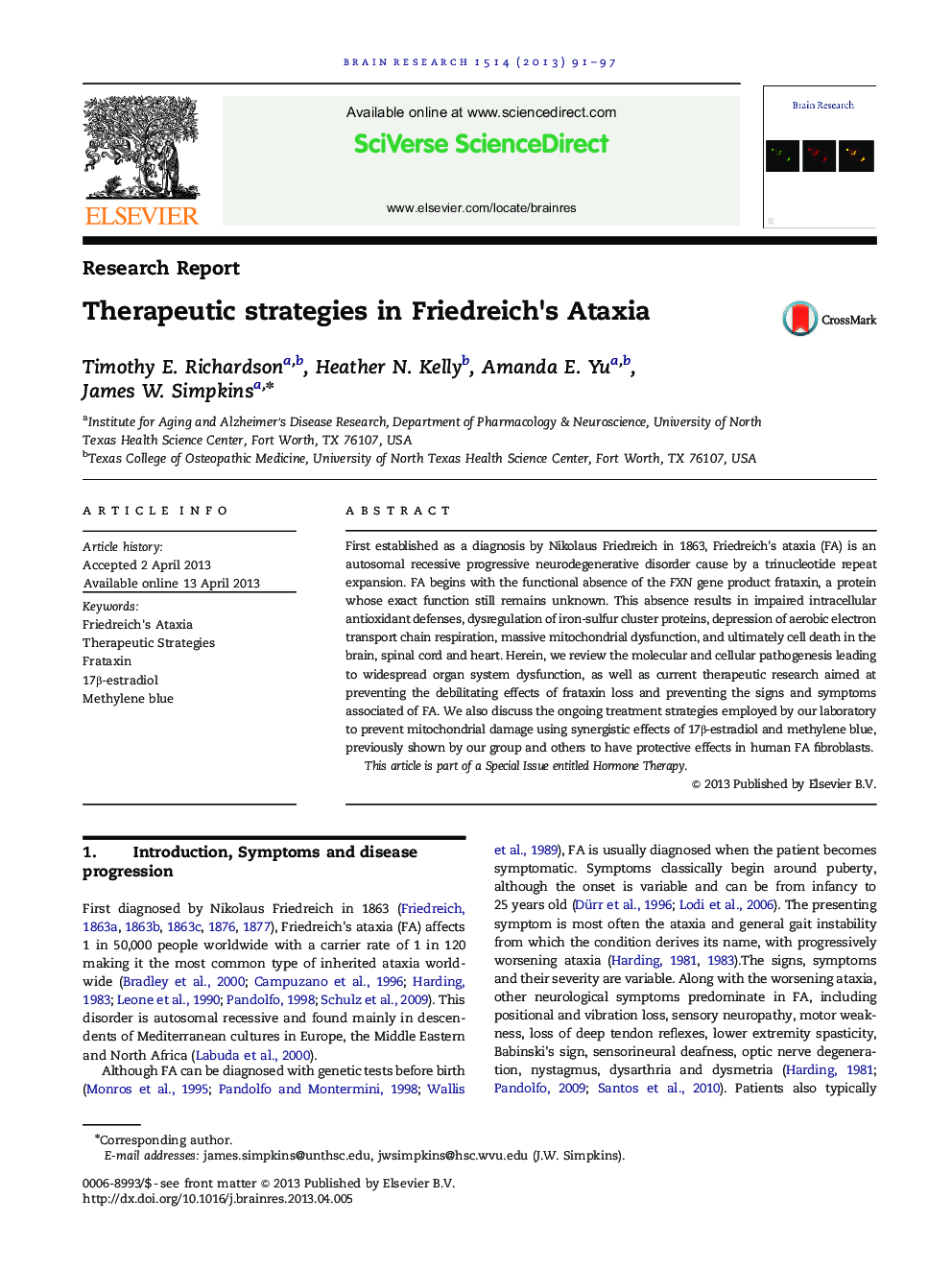| Article ID | Journal | Published Year | Pages | File Type |
|---|---|---|---|---|
| 4324669 | Brain Research | 2013 | 7 Pages |
First established as a diagnosis by Nikolaus Friedreich in 1863, Friedreich's ataxia (FA) is an autosomal recessive progressive neurodegenerative disorder cause by a trinucleotide repeat expansion. FA begins with the functional absence of the FXN gene product frataxin, a protein whose exact function still remains unknown. This absence results in impaired intracellular antioxidant defenses, dysregulation of iron-sulfur cluster proteins, depression of aerobic electron transport chain respiration, massive mitochondrial dysfunction, and ultimately cell death in the brain, spinal cord and heart. Herein, we review the molecular and cellular pathogenesis leading to widespread organ system dysfunction, as well as current therapeutic research aimed at preventing the debilitating effects of frataxin loss and preventing the signs and symptoms associated of FA. We also discuss the ongoing treatment strategies employed by our laboratory to prevent mitochondrial damage using synergistic effects of 17β-estradiol and methylene blue, previously shown by our group and others to have protective effects in human FA fibroblasts.This article is part of a Special Issue entitled Hormone Therapy.
